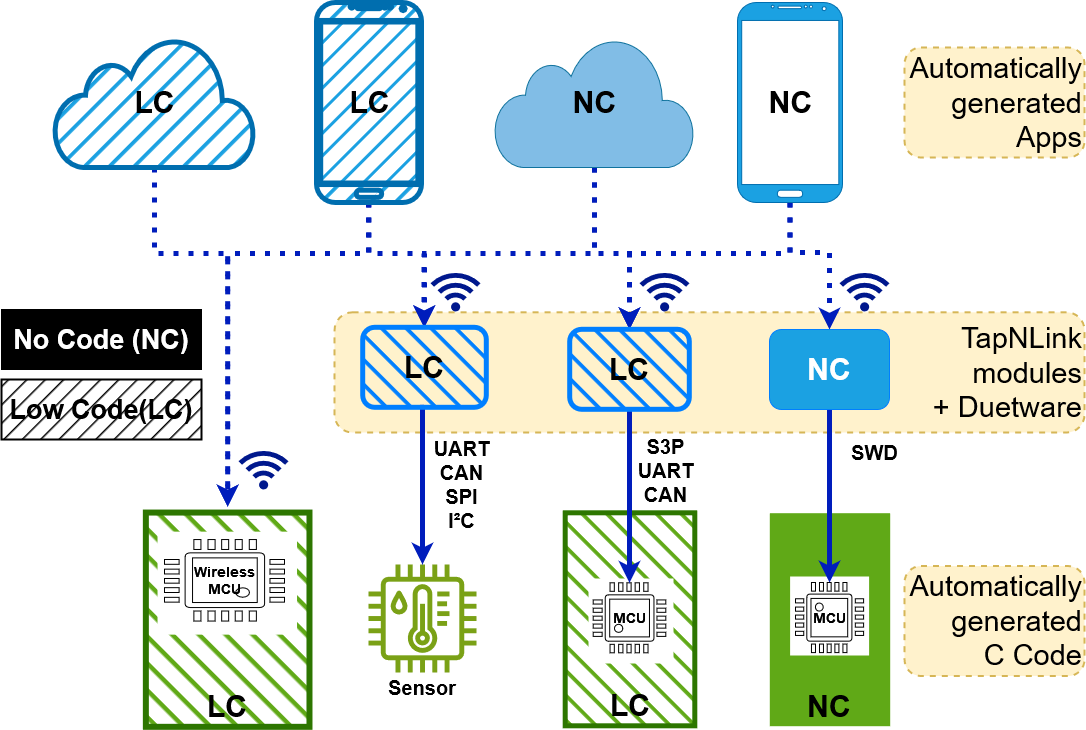Getting Started
No Code- Low Code solution
The diagram below shows how our No-Code / Low-Code solution fits together:

The NO-CODE applies to:
-
At the target application level when connecting to a microcontroller (MCU) via its debug port (SWD),
-
At the level of our modules (or gateways) when we mainly use lwM2M commands (and generated Java),
-
At the mobile app level when using App Creator in a simple mode,
-
At the cloud level when using our environment creation scripts on AWS.
The LOW-CODE applies to:
-
When using a wired protocol (S3P, MODBUS,...). But in this case, code is automatically generated by our tools,
-
At the level of our modules (or gateways) when we implement Java (e.g. to read a sensor or build datalog),
-
At the mobile application level, when you use App Creator, when you add inline nodes or when you want to modify the generated source project,
-
At the mobile app level when using App Creator in a simple mode,
-
At the cloud level when we use our APIs to launch lwM2M commands.
For what uses?
The Iotize modules and gateways can be used for several purposes:
-
as an inferface between a mobile application and a device (target) that you want to modify/monitor (Human Machine Interface on mobile).
-
as an inferface between a remote application (on the 'Cloud') and this target device.
-
as a processor board that manages sensors/actuators.
At a first step, we will focus on the first functionality: how to create a mobile App to control an electronic system.
The main stages
To achieve these goals, let's consider the different steps:
-
Connection to your electronics,
-
Configuration of the interface module (or gateway),
-
Creation/editing of a mobile application ,
-
Test this mobile application,
-
Generation of Apps according to the desired platforms: iOS, Android, etc
-
Cloud connection.
The different 'getting started' pages will help you in these different steps.